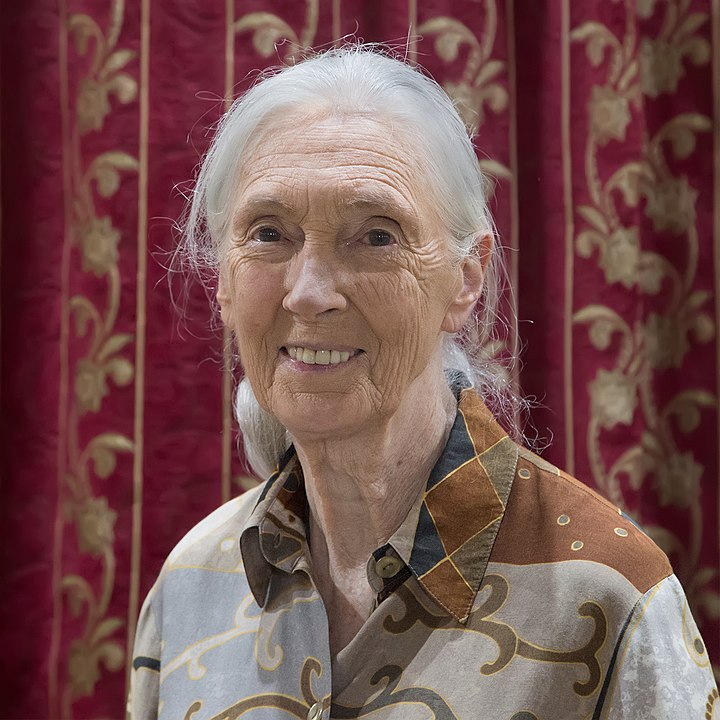Today is Jane Goodall’s 90th birthday. She might be celebrating with the chimpanzees she’s close to.
Goodall was born in 1934 in London, and her first encounter with chimpanzees was a stuffed toy her father gave her instead of a teddy bear. Her mother’s friends thought the toy might terrify Goodall, but she loved it, named it Jubilee, and still keeps it on her dresser. As a child she was drawn to all sorts of animals, so when she was about 23 she moved to Africa, onto a farm owned by a friend. She got a job as a secretary, and at one point made a phone call to Louis Leakey, the famous archaeologist and paleontologist. All she really wanted to do was talk with him about animals, and at the time she didn’t know he was looking for a researcher to specialize in chimpanzees. He believed that studying modern apes could provide some ideas about the behavior of early human ancestors.
Leakey offered Goodall a job as a secretary, which she accepted. Then at Olduvai Gorge (today in Tanzania, but at the time in Tanganyika), he explained his ideas in detail. In the late 1950s he sent her to London to study, then to a national park in Africa to do field work with chimpanzees. Because of the standards of the time, Goodall had to be accompanied by her mother. (Nowadays primatology consists of both men and women researchers, which is partly due to Goodall.)
She didn’t have a college degree, though, so after two years of field work she went to the University of Cambridge and enrolled in a PhD program — without first having any previous degree. She was only the eighth person to do that. During the 1960s she received her PhD, and along the way earned a Bachelor of Arts degree as well — not in the traditional order, but it seems to have worked out.
Her initial field work in Tanzania established that humans were not the only ones who could use tools, and also that chimpanzees were not, as was believed at the time, herbivores. In response to her discoveries, Louis Leakey said “We must now redefine man, redefine tool, or accept chimpanzees as human!”
In all Goodall spent decades studying chimpanzees, and even became accepted into their society. She was, she’s pointed out, the lowest-ranking member of the troop for almost two year. She finally had to leave the troop when an aggressive male she named Frodo became the leader and attacked her. She established the Jane Goodall Institute, which supports primate research, and the Tchimpounga Chimpanzee Rehabilitation Center to care for injured and orphaned chimps. The University of Michigan established the Goodall Institute’s Center for Primate Studies in the mid 1990s to house all her archives — in 2011 the Center moved to Duke University.
Goodall is still an active environmental advocate, and suggests that a vegetarian diet (such as her own) is much better for environmental and ethical reasons. She’s won innumerable awards, is a United Nations Messenger for Peace, and a member of the World Future Council. She’s also entered popular culture; Gary Larson’s Far Side cartoons once showed two chimps grooming. One finds a blond hair and asked the other “Conducting a little more ‘research’ with that Jane Goodall tramp?” The Goodall Institute thought it was in bad taste, but when Goodall herself saw it she thought it was funny, and with Larson designed a t-shirt with the cartoon, benefiting the Institute. Some, though, sided with the Institute. When Larson visited Goodall’s research facility, Frodo attacked him.

Jane Goodall in Tanzania in 2018. By Muhammad Mahdi Karim – Own work, GFDL 1.2, https://commons.wikimedia.org/w/index.php?curid=72964222
